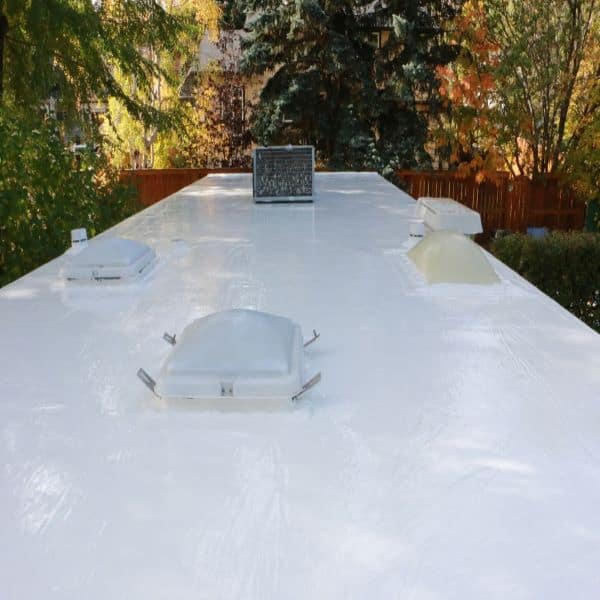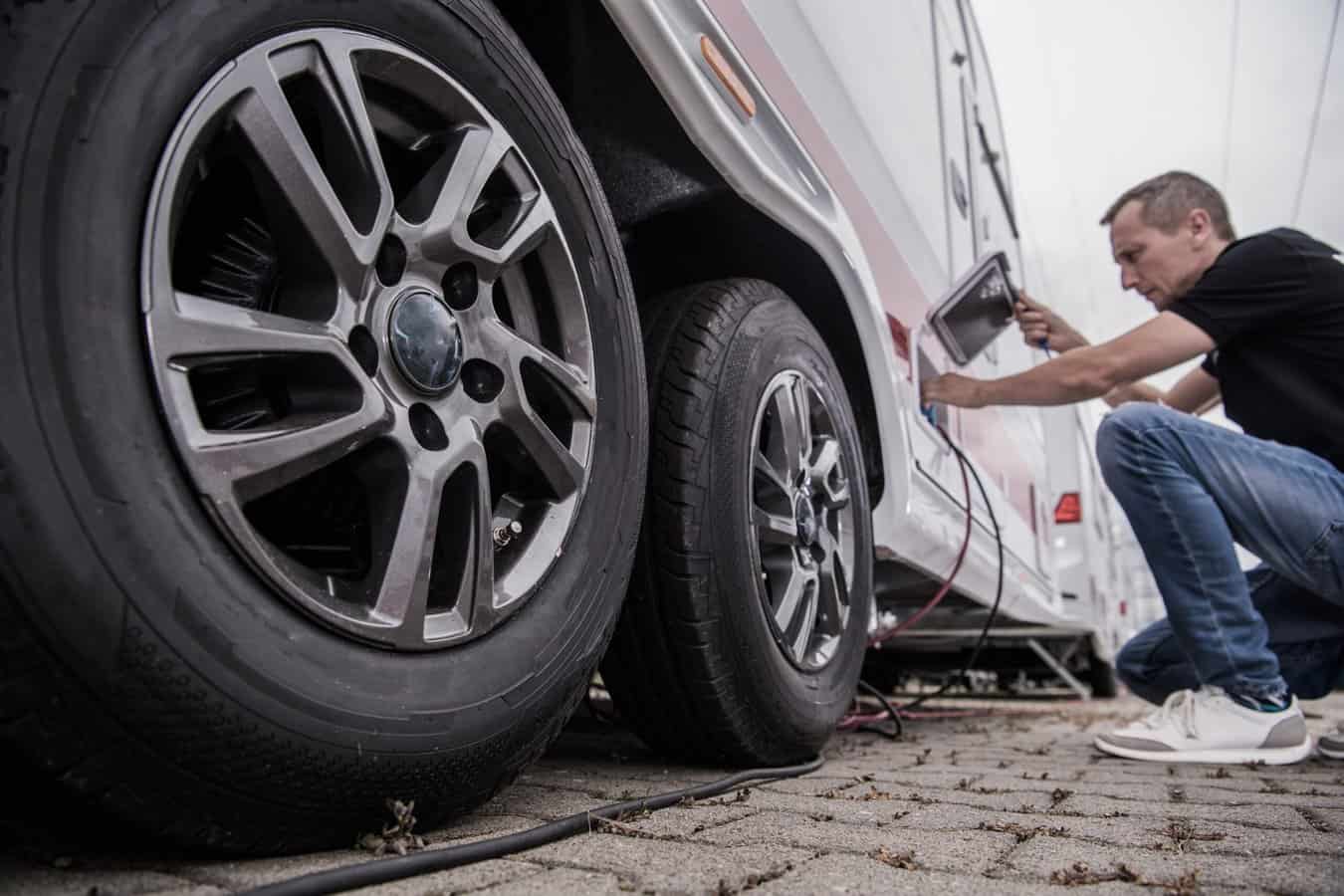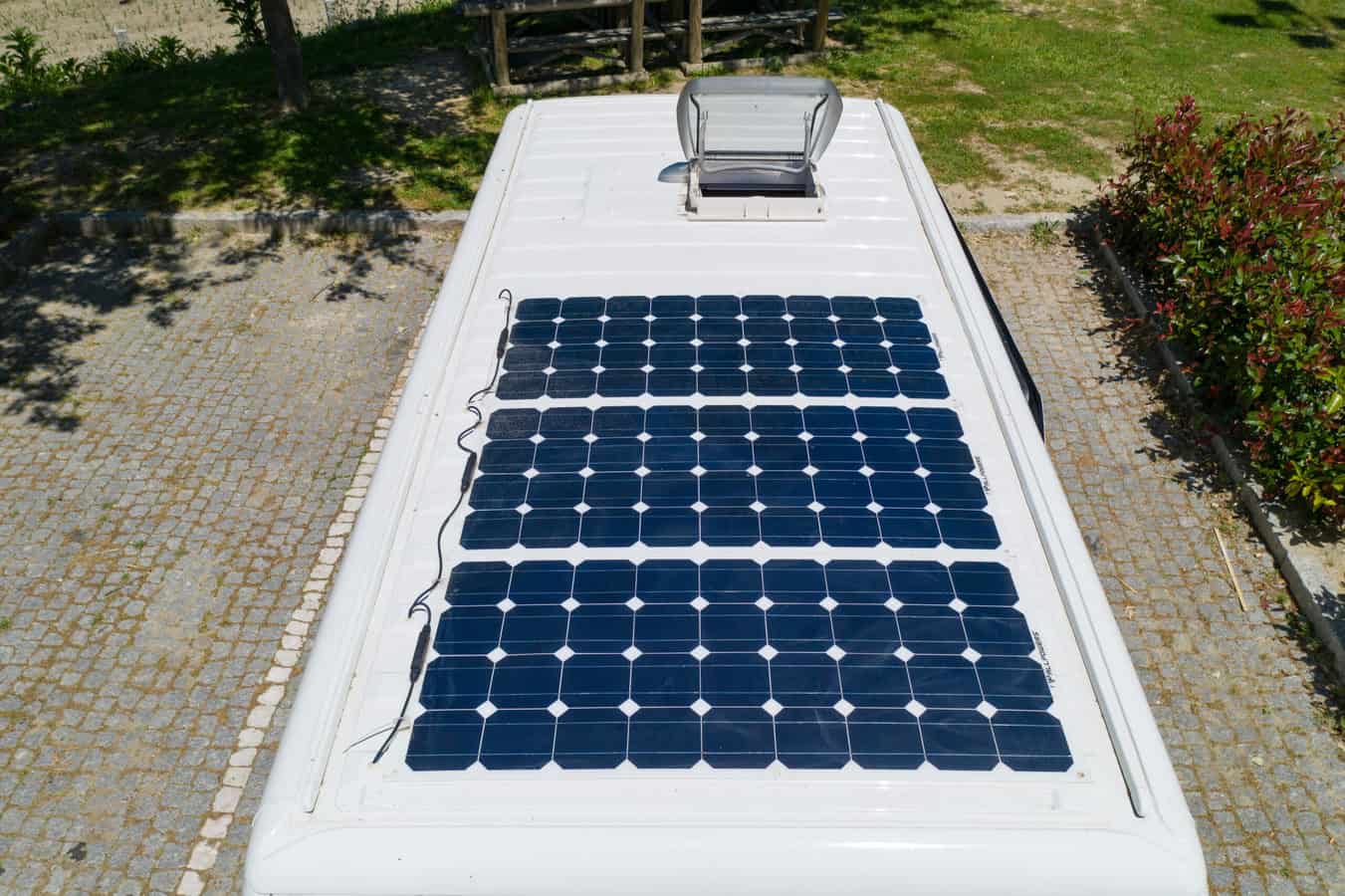
In partnership with RV Flex Repair
Do You Have The Right RV Roof Coating?
For the passionate RV owner, your vehicle is more than just a mode of transport—it’s your home on wheels, your ticket to boundless exploration, and the vessel for countless unforgettable experiences. With such importance placed on your RV, it’s vital to ensure every part of it is well-maintained and protected, with one of the most critical components being the roof and the type of roof coating it has.
RV enthusiasts know that their RV’s roof is a crucial component that requires consistent care and protection. It’s the shield against harmful UV rays, harsh weather conditions, and the occasional fallen tree branch. Today, we’re going to provide you with an insider’s guide to selecting the right roof coating for your RV. We’ll delve into the characteristics of acrylic, polyurethane, and silicone roof coatings.
In this comprehensive guide, we’ll be delving into the details of acrylic, polyurethane, and silicone roof coatings and providing you with all the essential information to make an informed decision on which is the right choice for your RV.
Acrylic roof coating: The budget-friendly choice
Acrylic coatings are a go-to choice for RV owners on a budget. This water-based roof coating offers decent protection from the elements, keeping your roof in reasonable shape. One of the highlights of an acrylic coating is its reflective nature, which helps lower the RV’s temperature by repelling sunlight, resulting in a cooler RV interior. They also help reduce the internal temperature of the RV by deflecting sunlight, therefore contributing to a cooler interior.
However, durability is where acrylic falls short. You can expect an acrylic coating to last a couple of years at best. Moreover, it requires multiple coats to provide adequate protection, and it doesn’t perform well in areas of ponding water. This means that if your RV roof is prone to collecting water, acrylic might not be the ideal choice for you.
One important note: You can only apply acrylic over an existing acrylic coating. Before applying a new coat, ensure that the existing one is clean and well-adhered.

Polyurethane roof coating: The middle ground
Stepping up from acrylic, a polyurethane roof coating offers a stronger and more durable coating solution. While it does come at a slightly higher price point, the increased longevity makes up for it. A polyurethane coating is expected to last 2-3 times longer than its acrylic counterpart. Although slightly more expensive than acrylic, the increased lifespan of a polyurethane coating makes it a worthy investment.
A polyurethane roof coating such as Liquid Rubber handles ponding water reasonably well, making it a suitable choice for RV roofs prone to water collection. This material requires multiple coats for optimal protection but can be applied over both acrylic and existing polyurethane coatings. As always, the surface needs to be clean and well-adhered.
For EPDM and TPO roofs, you’ll need to apply a primer before applying a polyurethane coating. Remember, this extra step is well worth the investment, as it significantly boosts the coating’s effectiveness.
For those willing to shell out a bit more for ultimate protection, 100% silicone is the way to go. Known for its exceptional longevity, a silicone roof coating is designed to last the life of your RV. Silicone coatings offer superior performance in standing water conditions and can be applied in just a single coat, saving you both time and effort. Another benefit of silicone is its versatility. It can be applied over almost any other type of coating.
Another benefit of silicone is its versatility. It can be applied over almost any other type of coating. Like the others, the surface must be clean and well-adhered, but silicone does not require a primer for properly aged and prepped TPO or EPDM roofs. Like a TPO roof, RV owners with gelcoat fiberglass roofs should rough up the surface before applying a silicone solution.
Silicone coatings are highly resistant to UV rays and temperature extremes, meaning they won’t crack, peel, or degrade under harsh sunlight. However, they do come at a higher price point, but considering their lifetime and durability, they’re a sound investment for your beloved RV.
A great silicone roof coating solution
A perfect example of this type of roof coating is RV Flex Repair by Ziollo. RV Flex Repair is a 100% silicone roof coating made in the USA. It can be applied with a standard 3/8″ nap paint roller, with just one coat. Ideal conditions for applying RV Flex Repair are when humidity is around 50% and temperatures of 75 F. Under these conditions, curing will be in the 1–2 day range. Maintaining these temperature and humidity disciplines ensures that only one coat will be needed, saving a ton of time, and money.
The team at RV Flex Repair recommends setting aside a weekend for the job of properly applying their high quality roof coating. Contact RV Flex Repair if you have any questions before you get started.
Important considerations
Choosing the right RV roof coating largely depends on your budget, the type of roof, and the conditions you often encounter on your outdoor journeys. Acrylic is suitable for budget-conscious RVers, while polyurethane provides a balance between cost and durability.
For those who seek the best protection and longevity, silicone is the premium option. RV Flex Repair by Ziollo stands alone as the first silicone RV roof product that is guaranteed for the life of your RV, and comes to you with free shipping.
Remember, no matter which coating you choose, proper preparation is key. A clean, well-adhered surface will always yield the best results. Invest time in maintenance and care, and your RV will reward you with many more adventurous and carefree journeys.
Conclusion
Choosing the right RV roof coating largely depends on your budget, the type of roof, and the conditions you often encounter on your outdoor journeys. Acrylic is suitable for budget-conscious RVers, while polyurethane provides a balance between cost and durability.
For those who seek the best protection and longevity, silicone is the premium option. RV Flex Repair by Ziollo stands alone as the first silicone RV roof product that is guaranteed for the life of your RV and comes to you with free shipping.
Remember, no matter which coating you choose, proper preparation is key. A clean, well-adhered surface will always yield the best results. Invest time in maintenance and care, and your RV will reward you with many more adventurous and carefree journeys. Remember, an RV is more than a vehicle; it’s a ticket to boundless exploration and unforgettable experiences. Here’s to the open road and the right roof coating to protect your home on wheels!
Choosing the right roof coating for your RV is an important decision, and we hope this guide has provided you with the knowledge to make an informed choice. Whether you opt for acrylic, polyurethane, or silicone, each coating has its own unique features and is designed to provide protection and longevity for your RV roof.



